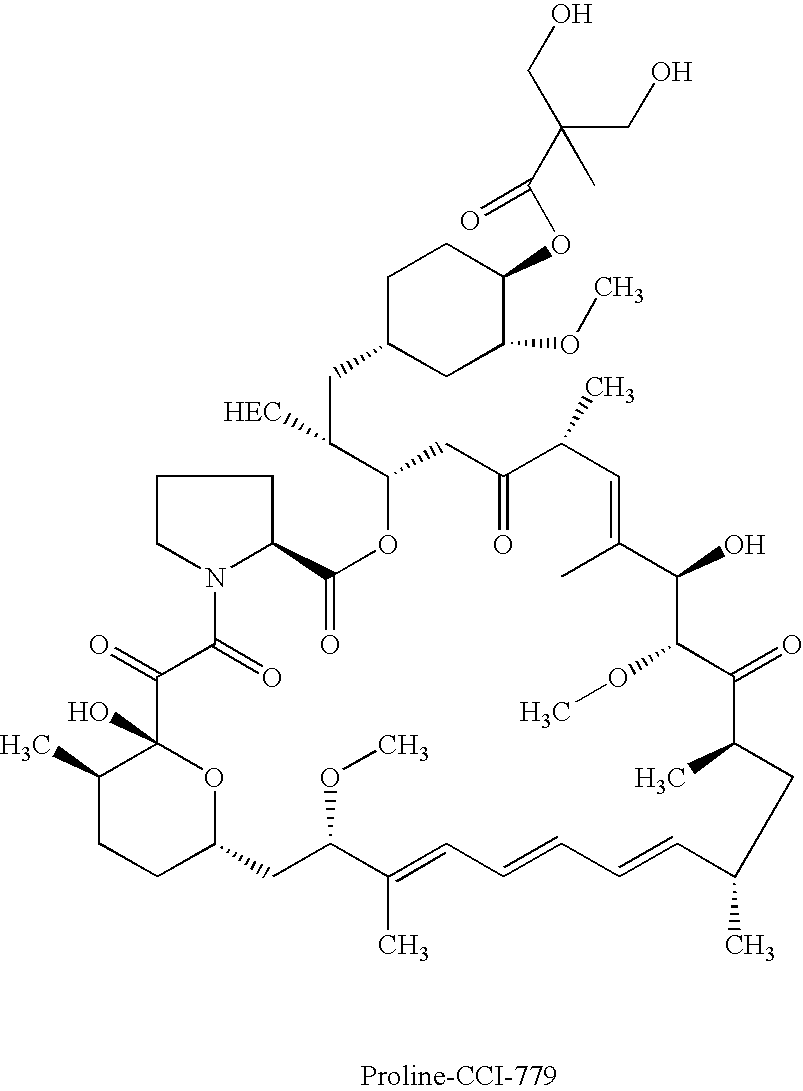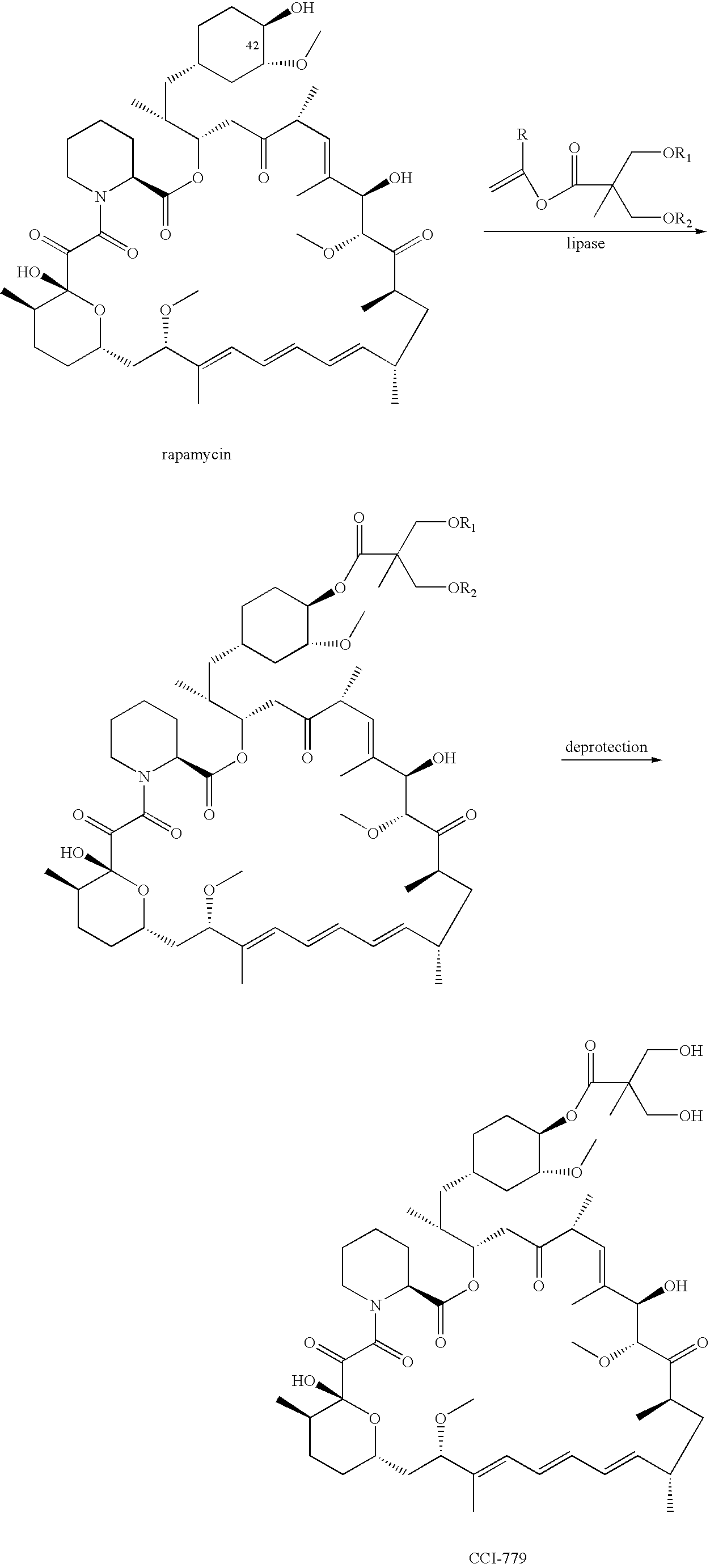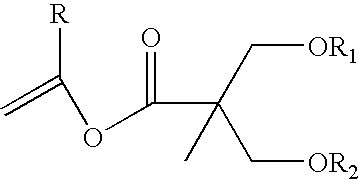Proline CCI-779, production of and uses therefor, and two-step enzymatic synthesis of proline CCI-779 and CCI-779
a technology of proline cci-779 and enzymolysis, which is applied in the direction of biocide, heterocyclic compound active ingredients, drug compositions, etc., can solve the problem that the discrimination between these two functional centers in order to achieve a selective synthesis of 42-monoacylated products still poses a difficult challeng
- Summary
- Abstract
- Description
- Claims
- Application Information
AI Technical Summary
Problems solved by technology
Method used
Image
Examples
example 1
Synthesis of Proline CCI-779
[0062]
[0063] This example describes a method for the synthesis of the proline analog of CCI-779, which is illustrated in the scheme provided above.
[0064] A. Preparation of 31,42-Bis(trimethylsilyl)proline Rapamycin (Compound B)
[0065] A 3-neck 50 mL flask was charged with proline rapamycin (compound A in the scheme) (1.47 g, 1.63 mmol), imidazole (0.45 g, 6.6 mmol, 4 eq.) and ethyl acetate (22.5 mL). The magnetically stirred mixture became cloudy. The mixture was cooled to 0-5° C. Under nitrogen protection, trimethylsilyl chloride (0.62 g, 5.7 mmol, 3.5 eq.) was added over 0.5 h via syringe while maintaining the temperature at 0-5° C. during the addition. The syringe was rinsed with 2.5 ml ethyl acetate and the mixture held for 0.75 hours (0.75 h), whereupon a white precipitate was formed. The reaction was monitored by thin layer chromatography (TLC) (30:70 acetone:heptane eluent). The TLC sample was prepared by quenching 3-4 drops of reaction mixture in...
example 2
Synthesis of Vinyl Ester
[0078] A. Synthesis of I:
[0079] PdCl2 (708 mg, 4 mmol), LiCl (168 mg, 4 mmol) in MeOH (16 mL) was heated under reflux until the mixture become a clear solution, MeOH was then removed under reduced pressure, vinyl acetate (10 mL) was added and the solution was concentrated to dryness. The residue was then re-dissolved in vinyl acetate (20 mL) and was added to a mixture of 2,2-bis(hydroxymethyl)propionic acid (34.8 g, 200 mmol) in vinyl acetate (280 mL). The mixture was then gently refluxed overnight (about 16 h). The solution was concentration under reduced pressure, to this residue heptane (150 mL) was added and the black precipitation was removed by filtration through a pad of celite. The heptane solution was concentrated and the residue was distilled under reduced pressure to give vinyl ester I as a colorless liquid (30.1 g, 75%)
[0080] B. Synthesis of II:
[0081] A solution of I (10 g) in MeCN (50 mL) was treated with aqueous H2SO4 (20 mL, 0.25 N) for 4 ...
example 3
Synthesis of CCI-779
[0082]
[0083] A. Synthesis of CCI-779 via Intermediate A
[0084] Method 1:
[0085] A mixture of rapamycin (6 g), vinyl ester 1 (2 g), lipase PS-C “Amano” II (6 g) in anhydrous TBME (36 mL) was heated at 45° C. under Ar2 for 2 days. The mixture was cooled to room temperature and enzyme was removed by filtration, the filtrate was concentrated, the oily residue was added to heptane while stirring. The batch was then cooled to −15° C. for 2 h, collect the solid on the Buchner funnel and washed with cold heptane, A was obtained as off-white solid, crude yield: 98%.MS (EI): 1070
[0086] Above crude A (6 g), dissolved in n-PrOH (24 mL) cooled to 0° C. with an ice-water bath, to this solution was added aqueous H2SO4 (12 mL, 1.2N). The mixture was stirred for 24 h at 0° C. and was then added to cold phosphate buffer (300 ml, pH=7.8), collect the solid on a Buchner funnel and washed with DI water and dry under vacuum, silica gel column purification eluting with hexane-acetone ...
PUM
| Property | Measurement | Unit |
|---|---|---|
| temperatures | aaaaa | aaaaa |
| temperatures | aaaaa | aaaaa |
| temperatures | aaaaa | aaaaa |
Abstract
Description
Claims
Application Information
 Login to View More
Login to View More - R&D
- Intellectual Property
- Life Sciences
- Materials
- Tech Scout
- Unparalleled Data Quality
- Higher Quality Content
- 60% Fewer Hallucinations
Browse by: Latest US Patents, China's latest patents, Technical Efficacy Thesaurus, Application Domain, Technology Topic, Popular Technical Reports.
© 2025 PatSnap. All rights reserved.Legal|Privacy policy|Modern Slavery Act Transparency Statement|Sitemap|About US| Contact US: help@patsnap.com



